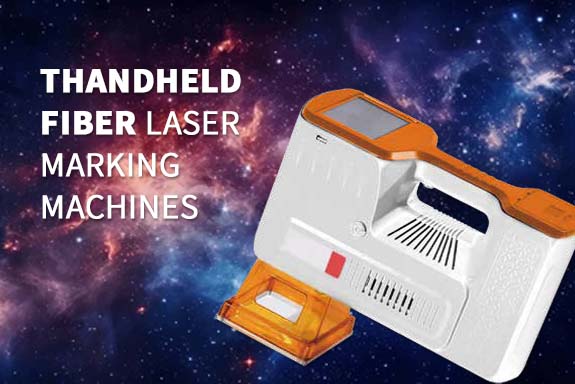Handheld laser marking machines are becoming increasingly popular in various industries due to their portability and efficiency. These versatile devices are designed to mark, engrave, and etch a wide range of materials, including metals, plastics, wood, and glass. This article will explore the purpose, working principles, applications, and advantages of handheld laser marking machines.
What is a Handheld Laser Marking Machine?
A handheld laser marking machine is a portable device that uses laser technology to create permanent markings on surfaces. These machines are particularly beneficial for tasks that require mobility and flexibility. They allow users to perform marking operations directly on-site, making them ideal for both industrial applications and personal projects.
How Do Handheld Laser Marking Machines Work?
The operation of a handheld laser marking machine can be broken down into several key steps:
- Laser Generation: The machine generates a focused laser beam using a laser source, typically a fiber or CO2 laser. Fiber lasers are favored for their efficiency and ability to mark metals, while CO2 lasers excel at marking non-metal materials.
- Beam Focusing: The laser beam is focused through a lens, concentrating the energy into a small point. This focused energy is essential for achieving precise markings.
- Marking Process: When the laser beam comes into contact with the material, it heats the surface and vaporizes the top layer, effectively removing material to create a mark or etching. The depth and quality of the marking can be adjusted by modifying the laser’s power, speed, and frequency. This flexibility allows users to customize the marking process for different materials and requirements.
- User Operation: Handheld laser marking machines are designed for ease of use. Users can guide the device directly over the surface they wish to mark, enabling them to work in tight spaces or on large objects without difficulty.
Applications of Handheld Laser Marking Machines
Handheld laser marking machines are used across various industries, each benefiting from the precision and flexibility these devices offer. Some common applications include:
- Manufacturing: In manufacturing, these machines are essential for marking parts with serial numbers, barcodes, and logos. This helps in tracking and identifying components throughout the production process.
- Jewelry: The jewelry industry uses handheld laser marking machines to create personalized engravings on rings, pendants, and bracelets. These machines allow for intricate designs that enhance the uniqueness of each piece.
- Electronics: Handheld laser marking machines are used to mark electronic components with identification numbers and codes. This marking ensures compliance with regulations and facilitates traceability.
- Medical Devices: In the medical field, precision is critical. Handheld laser marking machines mark surgical instruments, implants, and other medical devices with necessary information without compromising cleanliness or sterility.
- Personalization: Many small businesses and artisans use handheld laser marking machines for custom engraving on gifts, awards, and promotional items. This adds value and uniqueness to their products.
Advantages of Handheld Laser Marking Machines
Handheld laser marking machines offer several significant advantages over traditional marking methods:
- Portability: One of the main benefits is their portability. Users can easily transport these machines to various locations, making them ideal for on-site marking tasks.
- Precision: Handheld laser marking machines provide high accuracy and detail in markings. The laser’s focused beam allows for intricate designs and clear text, which is especially important in industries where precision is critical.
- Versatility: These machines can mark a wide range of materials, including metals, plastics, wood, glass, and more. This versatility makes them suitable for various applications across different industries.
- Speed and Efficiency: Laser marking is generally faster than traditional methods like stamping or etching. The non-contact nature of laser marking means there is minimal wear on the tool, reducing downtime and maintenance costs.
- Environmental Impact: Handheld laser marking machines are more environmentally friendly compared to chemical marking methods. They do not produce harmful waste or emissions, making them a sustainable choice for businesses.
Considerations When Using Handheld Laser Marking Machines
While handheld laser marking machines offer many benefits, there are some considerations to keep in mind:
- Training: Users should be properly trained to operate the machines safely and effectively. Understanding the laser’s settings and capabilities is essential for achieving the best results.
- Material Compatibility: Not all materials are suitable for laser marking. Users should be aware of which materials their machine can effectively mark to avoid damage.
- Safety Precautions: Laser marking involves high-energy beams, so users must take appropriate safety precautions, including wearing protective eyewear and ensuring a safe working environment.
Conclusion
Handheld laser marking machines represent a significant advancement in marking technology, offering a combination of portability, precision, and versatility. Their ability to create high-quality, permanent marks makes them invaluable tools across various industries, from manufacturing to personalization. As technology continues to evolve, these machines will likely become even more integral to the way we mark and engrave materials, enhancing productivity and creativity in countless applications.



